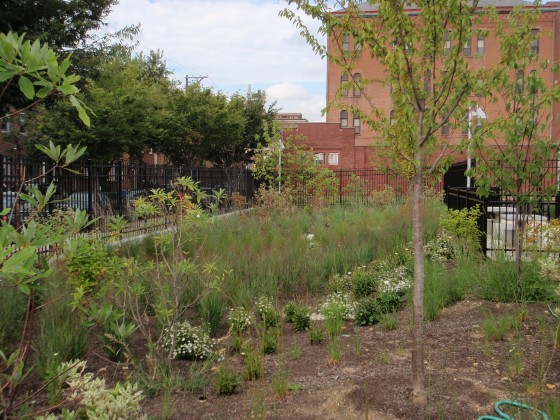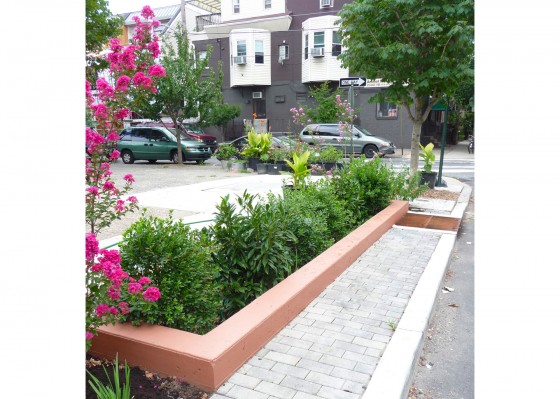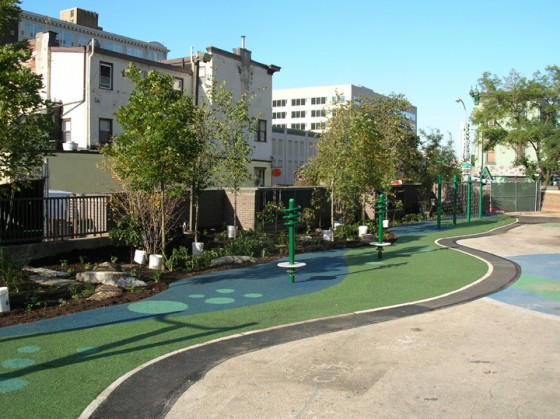To reduce water impairments caused by stormwater runoff, the EPA developed the Clean Water Act: Stormwater Strategy Summary of 2008 – 2010.
To comply with these regulations, the Philadelphia Water Department has drafted Green City, Clean Waters. It’s a 25-year plan with a goal aimed at reducing the amount of pollutants in our combined sewer system caused by combined sewer overflows by 85%, and to capture the first one-inch of stormwater runoff. Combined water systems are sewers designed to collect rainwater runoff, sewage and industrial water in the same pipe. Sixty percent of Philly’s 3,000 miles of sewers are constructed in this manner.
“Dilution was the solution,” said PWD spokesperson Joanne Dahme about meeting the standards presented in said act.
The program will be implemented through various types of projects across the city. The projects are engineered to capture rainwater, at residents’ homes perhaps via rain barrels/gardens/roofs/planters and trees along the street, and the same at commercial properties, or rebuilding playgrounds to include a cistern beneath a porous basketball court, like at Herron Playground, located at 2nd & Reed in Queen Village, where rainwater is captured and stored as it slowly seeps back into the soil.

Herron playground

Garden at Herron
Engineers first constructed Philly’s sewer system in the 1880s, which the population celebrated as a leading international model at the time. The PWD remains today an international leader, poised to serve as a model for cities around the world with its stormwater management and sustainability initiatives. Through projects like Green Streets, the Big Green Block in Fishtown, and others, PWD has been leading an effort in recent years in the sustainability department.

Planters at Columbus Square
Eighty-seven percent of the city’s water mains are fabricated from cast iron, which is purported to last for a century. In the last fiscal year, PWD repaired more 954 broken mains. By redesigning schoolyards to include rainwater gardens and other elements of green stormwater reduction, the pressure placed on the water mains to store water is reduced. Before the rainwater reaches the pipes, gardens or porous courts or planters filter the rain into the soil.

At Greenfield Elementary
Of course it cannot catch it all, but by doing many of these projects around town and retrofitting old mains, or doing projects that include putting in new pipes but also will include these new elements, our water should become cleaner. At best, the amount of impervious surface will be reduced and in future decades, fewer pollutants will collect in the water we need for daily living.
–Lou Mancinelli
